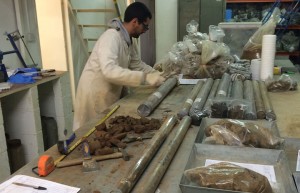
November 14, 2018
Keeping Up Standards
We have updated our sampling and testing procedures, following a number of changes to geotechnical industry standards in 2018.
“While standards are revised all the time, there have been a significant number of updates to the key ones for geotechnical investigation and testing this year,” explained Harrison General Manager – Testing Services, Henry Chapman.
“We hold more than 2,000 books, publications, guidance and standards in our library, with new versions being added all the time,” he said.
“It can be a challenge keeping up with the changes because standards are published by several different organisations, including the British Standards Institute (BSI), CEN (the European Committee for Standardization) and the International Organization for Standardization (ISO). All of them use different terminology too, for instance BSI uses confusing status information such as current, partially replaced, superseded for the same document.
“Amendments are sometimes incorporated by adding a ‘1’ or ‘2’ and so on to the updated version and text and contents may show changes with icons. While the updated year of issue is usually in the title, quite often, a standard can remain current for time alongside the document replacing it, so it is important to clarify which one to use.”
Some recent changes of note are:
BS EN ISO 17992 Geotechnical investigation and testing. Laboratory testing of soil: There have been a number of changes to test procedures, namely: the incremental oedometer test, fall cone test, unconfined compression test, unconsolidated undrained triaxial test, consolidated triaxial compression test on water saturated soils and, finally, the determination of liquid and plastic limits.
BS 1377 Methods of test for soils for civil engineering tests: Changes have been made to procedures for classification tests, chemical and electro-chemical tests and shear strength tests (total stress).
BS EN ISO 5667 Water quality. Sampling. The procedure for the preservation and handling of water samples has been updated.
“It is crucial to ensure all our processes comply with the current guidance,” Henry said. “This will mean that our clients can be confident their data has been gathered using the latest and most accurate techniques, and that results are valid when using this information in design and analysis.”
 |
